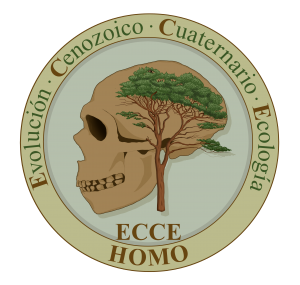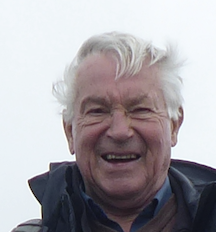JAMES ROSE
Rose is currently Emeritus Professor of Geography at the University of London, having been Professor and Head of Department of Geography at Birkbeck and Royal Holloway Colleges of that University. He is currently an Honorary Fellow of Royal Holloway University of London and a Visiting Research Associate of the British Geological Survey, Honorary Life Member of British (QRA), German (DEUQUA) and International (INQUA) Quaternary Research Associations, an Honorary Member of the Geologists’ Association and Senior Fellow of the Geological Society of London.
During his career he has acted as member of the UK Natural Environment Research Council (NERC) and Chairman of the NERC Radiocarbon Committee. He has also acted as a member of the Natural England Science Advisory Committee. Within the academy he has acted as member and deputy chairman of the UK and the Netherlands Universities Research Assessment Panels in Geography and Earth Sciences respectively. He has been appointed to the role of President of the Quaternary Research Association, Leader of the British Delegation to the XIII INQUA Congress, Beijing, member of Council of the Royal Geographical Society, the Geologists’ Association and an auditor for the status of Chartered Geologist (CGeol.) on behalf of the Geological Society of London.
As a result of his research contributions he has been awarded the Murchison Award and Victoria Medal of the Royal Geographical Society, the Coke Medal of the Geological Society of London and the Foulerton Award of the Geologists’ Association. Outside the academy he has acted as Chairman of a geological charity within the area of the UNESCO Jurassic Coast World Heritage Site, which has, during his tenure received The Queen’s Award for Volunteering and the Geographical Award of the Royal Geographical Society.
“At a time when the occupants of planet Earth are beginning to be aware of, and feel the effects of climate change, the publication of the vegetational history of the Iberian Peninsula over the past 66 million years gives us a perspective by which we can understand and evaluate the changes that are taking place, and that will await us and future generations. Iberian Paleoflora and Paleovegetation is published in digital form, and is free to access. It comprises three volumes: Paleocene-Pliocene, Pleistocene, and Holocene, and covers a total of 495 sites across Spain, Portugal, Andorra and the Balearic Islands, with authors from around the world. The text covers 1550 pages with references extra – but access to what you may wish to read is easy!
The sites are arranged alphabetically within each volume and are arranged in a standard format that facilitates access and usage. Each site is defined by the name, location and age range (usually related to cal BP). The text follows a very functional format with a description of the present-day vegetation, the topography and regional geology of the locality and the nature of the host material. Sites include marine, lake basins, coastal lagoons, cave sediments, organic and mineral sediments, peat bogs and soil profiles. Presence of archaeology is also reported and indeed, many sites consider the analysis of archaeological deposits. In addition, each site is identified by its latitude and longitude and whether the relevant evidence is obtained from an open section or borehole. Each site is then described in terms of the analytical methods, with pollen, charcoal and scanning electron microscope (SEM) analysis being dominant, along with the sedimentology. Radiocarbon, luminescence, Lead 210 and Caesium 137 dating are reported, as appropriate. Descriptions of the basic data are exceptionally clear with, in the vast majority of cases, a clear photograph of the local topography and landscape, including caves. Almost all of the pollen and charcoal diagrams have been redrawn into a standard format with standard colour scheme for difference genera (this must have been a major effort), and the SEM images of charcoal and wood are precise in their detail.
Within the context of this background data, each site is then reviewed in terms of the vegetation and vegetational changes over the period concerned. Attention is given to the relationship of these changes to known climate or human activity. The results are fascinating and the reader is presented with a remarkable pattern of changes associated with factors such as tectonic activity, climate change and especially glaciation and periglaciation, and wildlife and human colonisation, agriculture and abandonment. Each site gives as story of landscape change and gives us an insight into what the future may be in response to the rapidly changing climate and the effects of human activity.
The contents extend well beyond the defined scope of the series. From a geological point of view the reader gets an insight into the structural development of the regions with the development of tectonic basins, an issue that often bypasses the natural scientist. From a geomorphological point of view the reader gets an insight into the development of river basins, the episodes of active surface processes due to the absence of dense vegetation cover and the extend and development of caves. Geomorphological insight is also provided into coastal development with the construction of deltas and the build-up of barrier sediments and coastal lagoons. From an archaeological point of view the reader is able to determine the great influence of human activity on the landscape and vegetation, along with the patterns of human colonisation and vegetational change.
Perhaps, most of all, the contents of these volumes inspire the reader to visit the areas concerned and see the landscape with new eyes, and greater perception. These volumes are a great achievement and should be a model for other parts of planet Earth.”

Grupo de investigación E005-II ECCE
HOMO (Evolución Cenozoico Cuaternario Ecología Homo)
© Paleofloraiberica








